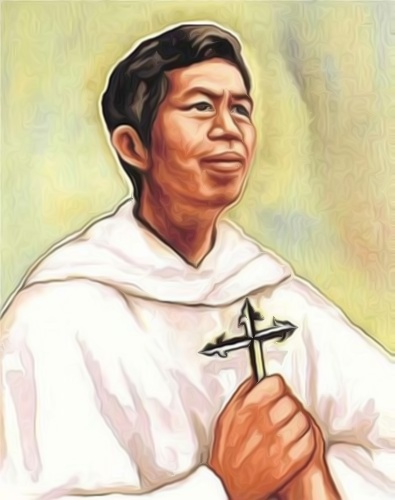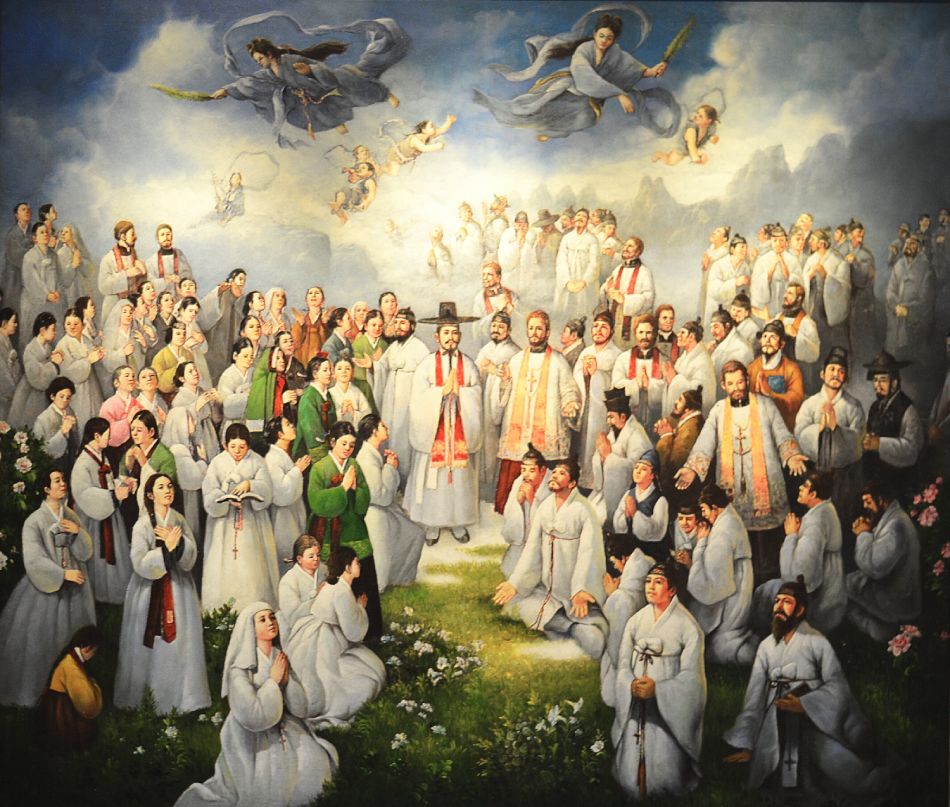24 November
Memorial
St. Andrew Dung-Lac, Priest & Companions
Martyrs
Today the Church celebrates the memorial of St. Andrew Dung-Lac, priest and martyr, and companions, martyrs. St. Andrew was one of 117 people who were martyred in Vietnam between 1820 and 1862. The last of the martyrs were 17 laypersons, one of them a 9-year-old, executed in 1862.
COLLECT PRAYER
O God, source and origin of all fatherhood, who kept the Martyrs Saint Andrew Dung-Lac and his companions faith to the Cross of your Son, even to the shedding of their blood, grant through their intercession, that, spreading your love among our brothers and sisters, we may be your children both in name and in truth. Through our Lord Jesus Christ, your Son, who lives and reigns with you in the unity of the Holy Spirit, God, for ever and ever.
Things to Do:
- Find out more about the Vietnam martyrs.
- Find out more about the suffering of the Church in communist Vietnam.
- Pray a rosary for those suffering persecution today in Vietnam.
- Cook a Vietnamese dish in honor of today’s saints.
St. Andrew Dung-Lac and Companions
There are 117 martyrs in this group and although they died at different times, they were all canonized by Pope John Paul II on June 19, 1988. Of the group, 96 were Vietnamese, 11 were Spaniards, and 10 were French. There were 8 bishops, 50 priests and 59 lay Catholics in the group. Of the priests, 11 were Dominicans, 10 belonged to the Paris Mission Society, and the rest were diocesan priests plus one seminarian. Certain individual martyrs were mentioned by name in the process of canonization: Andrew Dung-Lac, a diocesan priest; Thomas Tran-Van-Thien, a seminarian; Emmanuel Le-Van-Pung, father of a family; the Dominican bishops Jerome Hermosilla and Valentine Berrio-Ochoa; and John Theophane Venard.
—Excerpted from Saints of the Roman Calendar by Enzo Lodi

St. Andrew Dung-Lac’s name was originally Dung An Trân, and he was born about 1795 in a poor and pagan family in Bac-Ninh in North Vietnam. When he was twelve the family had to move to Hà-Nôi (Hanoi) where his parents could find work. There he met a catechist and got food and shelter from him. He also got education in the Christian faith for three years, and was baptized in Vinh-Tri with the Christian name Andrew (Andrew Dung). After learning Chinese and Latin he became a catechist, and thereafter taught catechism in the country. He was chosen to study theology, and on March 15, 1823 he was ordained a priest. As parish priest in Ke-Dâm he was tireless in his preaching. He often fasted and lived a simple and moral life, he was a good example for the people, and many were baptized. In 1835 he was imprisoned under emperor Minh-Mang’s persecutions (he was called Vietnam’s emperor Nero), but his freedom was purchased by donations from members of the congregation he served. To avoid persecutions he changed his name to Lac (Andrew Lac) and moved to another prefecture to continue his work. But on November 10, 1839 he was again arrested, this time with Peter Thi, another Vietnamese priest whom he was visiting so that he might go to confession.
Once again Andrew was liberated, along with Peter Thi, in exchange for money. Their freedom was brief. They were soon re-arrested and taken to Hanoi, where both suffered dreadful torture. Finally they both were beheaded December 21, 1839.
Source : Catholic Culture
